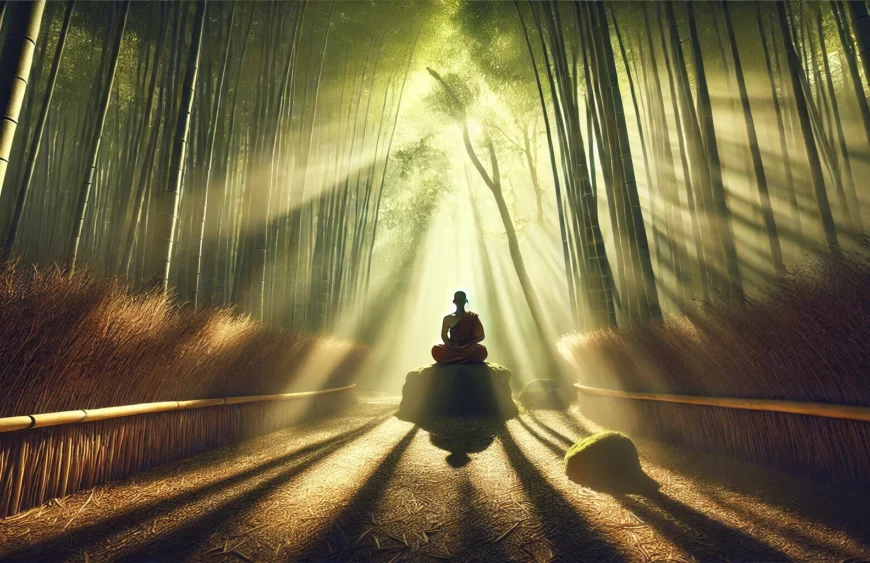The Connection Between Bamboo and Zen

Zen Breeze in Bamboo Shadows, Bamboo Shadows Reflecting Zen Essence
“Appreciating bamboo, one delves into Zen; seeking Zen, one discovers bamboo’s emptiness.”
The relationship between Buddhism and bamboo shares similarities with Confucian ideals but exudes a distinct Zen flavor. Zen, derived from the Sanskrit word “dhyana,” means “meditative absorption.” It refers to a practice of quiet contemplation and deep thought. Bamboo, known for not flowering or flaunting itself, stands tall with a minimalist elegance. Its solitary and serene demeanor evokes the image of a meditative monk, sitting quietly in a corner.
According to Buddhist tradition, after attaining enlightenment, Buddha led his disciples in meditation and spiritual practice in a tranquil bamboo grove. For Buddha, all beings possess the potential for enlightenment. Bamboo’s essence embodies emptiness, stillness, non-contention, and letting go.
Wang Yangming and the Wisdom of Bamboo
One of the most endearing stories about bamboo involves Ming dynasty philosopher Wang Yangming. According to The Record of Transmission and Practice, Wang Yangming once sought to understand the principle of “investigating things” as outlined in The Great Learning. He chose a bamboo grove as his subject. Sitting on a bench in the courtyard, he stared intently at the bamboo, focusing all his energy and thoughts on comprehending its nature. After seven days of intense contemplation, he achieved nothing but a splitting headache.
While the story may seem amusing today, it marked the beginning of Wang Yangming’s philosophical breakthrough and the development of his influential “School of Mind” philosophy.
Bamboo as the Ideal Companion for Scholars and Poets
Throughout history, bamboo has inspired countless scholars and poets as a symbol of unity between beauty and virtue. The “Seven Sages of the Bamboo Grove” were perhaps the first to find spiritual solace among the bamboo. Historical records describe their gatherings beneath the bamboo, enjoying carefree feasts and companionship.
Among them, Ji Kang stood out. While others sought pleasure or aligned with political powers, Ji Kang embodied the essence of bamboo—steadfast, untamed, and pure. His unyielding principles and loyalty to Taoist philosophy eventually led to his execution by the ruling Sima family. Yet, even in his final moments, Ji Kang remained composed, performing The Guangling Melody on the zither—a tale that has been celebrated through the ages. The bamboo grove thus became a sanctuary for noble souls.
A Life Encompassed by Bamboo
Eastern Jin scholar Wang Huizhi was famously infatuated with bamboo. His life revolved around it: he ate bamboo shoots, lived under bamboo-tiled roofs, traveled on bamboo rafts, cooked with bamboo fungus, wore bamboo skin, wrote on bamboo paper, and even walked in bamboo shoes. He famously declared, “I cannot live a single day without this gentleman.”
Similarly, the renowned poet Su Shi’s admiration for bamboo bordered on the extreme. In A Letter to Monk Qian at the Green Bamboo Pavilion, he wrote, “Better to have no meat than no bamboo. Without meat, one grows thin; without bamboo, one grows vulgar.” Su Shi elevated bamboo to the epitome of elegance. However, his words should not be taken too literally; without his love for meat, we wouldn’t have the famous dish “Dongpo Pork” today.
Bamboo, with its profound symbolism and timeless beauty, continues to resonate deeply in art, philosophy, and life. Its quiet strength and graceful demeanor remind us to seek simplicity, integrity, and harmony amidst life’s complexities.

